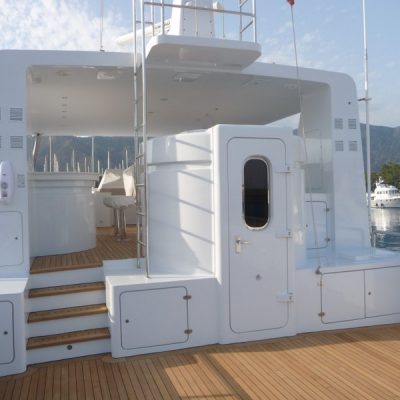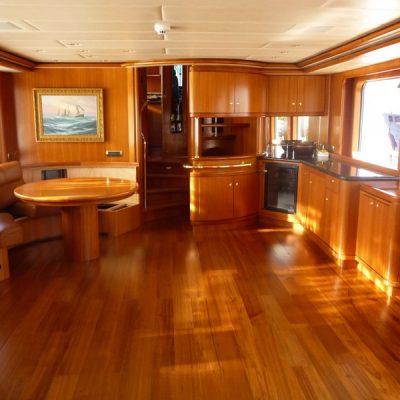
Carpentry
This discipline is known as the mother of all arts. The idea is true since the work requires a great deal of artistic vision. We deal with exterior as well as the interior. One of the most popular wood in shipbuilding is teak. And teak is tricky since there is limited growth on the planet and quality requires a real challenging expertise. You may get some idea from my article below which is a summary of our years of experience.
Teak Quality
As a rule thumb, the good quality teak comes from MYANMAR (BURMA) and the quality is defined by a group of teak experts of Myanmar Timber Enterprise and this can be checked and proved on the custom papers, certificates, and legality documents. BURMA defined quality classification depends on the region of Burma the tree groves at, age of the tree, physical condition of the form, knot frequency etc. This classification contains eight different quality definitions which begin with Second followed by Third, Fourth and Saw grades 1,2,3,4 and Mx (mix). The First quality definition does not exist. To reach the second quality is nearly impossible since it is produced in very small amounts and is extremely expensive.
The teak we use is Third which is the available best quality in the market. Also we use on the deck “quarter cut” teak planks which are preferred for strength and less wear. You may notice on old teak decks that some planks are full of highs and lows whereas some planks are comparatively smooth and the condition difference between these two type of planks is determined by there being `quarter cut` or `crown cut` in the first place. The difficulty is you can only get %35-%40 quarter cut planks from the all tree trunk and the rest is not useable for a real acceptable teak deck quality. The difference in the cutting method can reduce the life span of a teak deck from 20 down to 6 or 7 years.
Most of the end users in our industry including European competitors do not use this quality product.
After cutting the bull forms into teak planks, quality definitions are totally meaningless since even Mx quality bull forms can be cut and better parts can be claimed as first quality and no control is possible.
So as a conclusion, the price depends on two factors; quality of workmanship and quality of materials whereas quality of materials also depends on two factors; quality of teak wood and the cutting method.
The teak we use is Third which is the available best quality in the market. Also we use on the deck “quarter cut” teak planks which are preferred for strength and less wear. You may notice on old teak decks that some planks are full of highs and lows whereas some planks are comparatively smooth and the condition difference between these two type of planks is determined by there being `quarter cut` or `crown cut` in the first place. The difficulty is you can only get %35-%40 quarter cut planks from the all tree trunk and the rest is not useable for a real acceptable teak deck quality. The difference in the cutting method can reduce the life span of a teak deck from 20 down to 6 or 7 years.
Most of the end users in our industry including European competitors do not use this quality product.
After cutting the bull forms into teak planks, quality definitions are totally meaningless since even Mx quality bull forms can be cut and better parts can be claimed as first quality and no control is possible.
So as a conclusion, the price depends on two factors; quality of workmanship and quality of materials whereas quality of materials also depends on two factors; quality of teak wood and the cutting method.
DECKS & EXTERIORS
Once you have the good quality teak and you make sure that you cut it correctly (quarter cut), then there are couple more concerns in laying it. First of all, sharp pointing corners should be avoided because they tend to break. That is why “Fish bone” joints are preferred.
The second issue is the thickness. Ideally the final thickness on deck should be 12 mm. The logic behind this is that teak does not require frequent sanding but if you happen to do so it should not be more frequent than 3 to 4 years. Keep in mind that you remove 1 to 2 mm every time you sand. So a properly made teak deck should last about 20 years before you reach the critical depth concerning the caulking channels.
Teak Deck Maintenance
Maintaining a teak deck is crucial. Teak has a natural oil and we must keep it. Teak prefers sea water instead of fresh water so the teak deck should be washed sea water. Teak does not like chemicals so as soap nothing Is better than pure soft soap without any additives. And pressure washing your teak deck is a crime since you are pushing its natural oil away with the pressure. Soon you will start seeing mildewing spots.
INTERIORS
About the interior modifications, the main concern is to comply with the existing style so no eye distinguishes the difference between the newly build sections and the originals. We prefer preliminary examinations of our interior projects with 3D designs that we produce and agree on the details before we start the actual work.

















